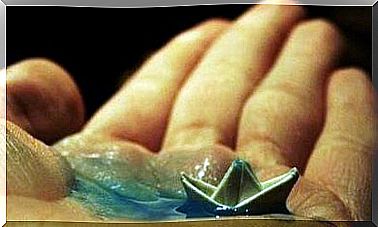Esketamine, An Antidepressant Nasal Spray?

Esketamine is an innovative compound with good prospects in the treatment of depression. It is especially useful in forms resistant to other treatments, since it acts with different mechanisms than the known antidepressants.
It is a derivative of ketamine, a general anesthetic widely used intravenously or intramuscularly. It has hypnotic, analgesic and amnesic properties. Its action is rapid and short-term. It is also considered a recreational drug.
Ketamine is a combination of two enantiomers, i.e. formed by a pair of molecules in which one is the mirror image of the other. Esketamine is precisely the S enantiometer of ketamine, the strongest and most active part. The other enantiometer is the superamine.
What are the uses of esketamine?
In 2019, the FDA approved esketamine for the treatment of resistant depression, in combination with oral antidepressant therapy.
The drug, Spravato – marketed by Janssen – is taken intranasally. It is indicated in the treatment of acute depression in adults when other antidepressants have no effect.

Some studies have confirmed the efficacy of esketamine in reducing suicidal ideas; this especially in depressed patients resistant to conventional treatment and with an immediate risk of suicide. The main advantages of its use are:
- Rapid onset of action: about 4 hours compared to several weeks for other antidepressants.
- The intranasal intake is not invasive.
- High bioavailability.
Mechanism of action of esketamine
Esketamine is a non-competitive antagonist (i.e., it acts by regulating levels in the brain) of N-methyl-D-aspartate (NMDA), a glutamate receptor. Glutamate, an exciting neurotransmitter, has been linked to suicidal behavior.
In this situation, esketamine behaves differently from other antidepressants. It is also credited with the ability to restore the synaptic connections of neurons. However, the exact mechanism of this antidepressant action is not fully known.
It also acts to some extent as a dopamine reuptake inhibitor; consequently it increases its activity in the brain. Unlike ketamine, however, it does not interact with sigma receptors.
Terms of use
The drug is only available in the United States through a controlled distribution system, due to possible side effects. There is also the risk of potential abuse. The administration must always be accompanied by a guide to the drug, in which the use and contraindications will be explained.
Due to the high risk of side effects, esketamine must be prescribed and supervised by your doctor. The patient should be monitored for two hours after administration.
As required by the pharmaceutical company that markets it, the patient and the prescribing physician must sign a form. The patient must leave the facility and return home safely, and cannot drive all day.

Side effects
Intranasal esketamine can have serious side effects, including:
- Sedation.
- Dissociation.
- Dizziness.
- Anxiety.
- Nausea and vomit.
- Decreased sensitivity.
- Increased pressure.
- Inebriation.
- Appearance of suicidal thoughts.
These side effects typically appear soon after taking the drug and disappear later in the day. However, it is very important to take them into account and control them.
On the day you receive your treatment, you cannot drive or carry out activities that require vigilance. You need to carefully follow your doctor’s directions.
In conclusion, intranasal esketamine is a promising new fast-acting option for severe depression. It opens a very interesting window and new approaches in research against depression.
It has not yet been approved in Europe although approval has already been sought from the European Medicines Agency (EMA). We will therefore have to wait, see how the drug is working and the long-term developments of the research.









